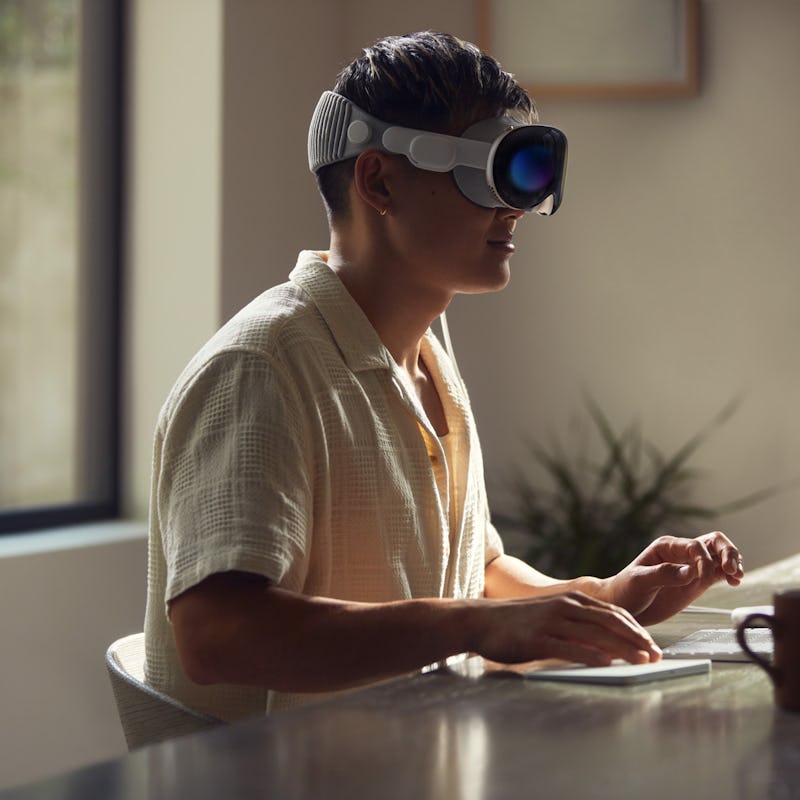3D Movies Failed. Apple Vision Pro Will Bring Them Back.
Whether professionally made or shot with an iPhone 15 Pro, 3D videos and movies are set to return from the dead... again.

3D movies don’t have the cultural cache they used to. Avatar: The Way of Water’s $2.3 billion in global earnings might suggest otherwise, but when you look at the available ways to actually watch James Cameron’s epic in 3D at home... it’s clear there’s not a lot of interest from TV makers to enable it or demand from anyone watching to make it happen.
Apple could soon change that.
The company is making 3D a big part of the Vision Pro pitch, both in watching 3D movies and shooting “spatial” photos and videos with the headset itself. A $3,500 headset, even one made by Apple, can’t drag 3D out of irrelevance on its own, but a wildly popular smartphone that will soon shoot 3D video? That just might.
3D’s second (or third, or fourth) chance
The 3D tag appeared in a tvOS 17.2 beta.
In the late aughts and early 2010s, it seemed like just about every blockbuster movie, whether it was about superheroes or animated characters your children would soon own toys of, got a 3D release. Sometimes movies were conceived with 3D in mind, other times they were converted after the fact, but if it got butts in seats, seeing films with 3D glasses was an option.
As Sam Byford, former writer at Reuters and The Verge, notes in his newsletter Multicore, the trend was followed by a market for 3D TVs that quickly became a gimmick for manufacturers to sell more TVs. It’s not that 3D TVs were necessarily a bad idea or even executed poorly, it’s just that there wasn’t enough 3D content there to support them. And devices designed to shoot personal 3D photos and videos that could have made a difference, like the HTC Evo 3D and RED Hydrogen One smartphones, arrived far too early or late, and were clumsily designed to change the narrative.
Apple appears to have several solutions for that. Byford speculates in his newsletter that movies customers already have in their library with a 3D version could be upgraded at no additional cost, just like Apple did with 4K HDR content. And at least based on the “3D” tag spotted in the Apple TV app in the tvOS 17.2 beta from earlier this month, it seems like that might come true. That move could immediately create a pool of 3D content to dive into if you purchase an Apple Vision Pro on day one.
The iPhone 15 Pro and Spatial Video
The iPhone 15 Pro can shoot spatial video in landscape.
The thing that might actually change the long-term culture around 3D video, and maybe, just maybe, the demand for it, is the iPhone 15 Pro. Apple’s Vision Pro introduction showed people using the device to capture spatial videos and photos, an awkward and weird way to create what’s essentially 3D videos and photos. If the Vision Pro is the only way Apple will offer to view spatial video it makes sense that it would be a way to create it too.
Luckily, for anyone who doesn’t want to scare their kids, the iPhone 15 Pro can also capture spatial video with its updated camera system. Apple plans on rolling out the feature with iOS 17.2 so people can start capturing spatial video before the Vision Pro launches next year, and by all accounts it sounds like it has the “wow factor” Apple wants it to.
Inverse Deputy Editor Raymond Wong writes that spatial video introduces an even greater “sense of realism” to footage you capture on your phone. “Spatial videos can weirdly trick you into activating your senses,” he says. “I recall feeling a sense of warmth from the cracking campfire spatial video I saw in June.”
Even better, the HEVC file format that spatial videos are saved in can be ported to other VR headsets. According to UploadVR, Apple’s already shared the specifications for the file format and a tool has been made that lets you watch spatial videos in Meta Quest headsets. With a few tweaks, you can even use a Meta Quest 3 to shoot 3D video.
Apple doesn’t turn spatial video on by default, so you’ll still have to deliberately choose to shoot a new type of content, but having the ability so easily accessible on an already popular phone could make a difference. It could certainly make people interested in 3D videos in a way they weren’t before.
New platforms are always followed by new media
The Vision Pro has a lot riding on it, and unkown amounts of influence once it comes out.
Maybe the Vision Pro and iPhone 15 Pro don’t move the needle for 3D movies. The $3,500 price tag of the Vision Pro won’t help. But if spatial videos drive any kind of interest, there are a lot of adjacent dominoes that could fall that might make a 3D movie renaissance happen anyway.
The Ray Ban Meta Smart Glasses ship with two cameras. They’re not designed to capture stereoscopic video — they have ultra-wide lenses and are pretty close together — but there’s no reason a future hardware revision or maybe even a software update couldn’t change that. Snap’s four-year-old Spectacles 3 shoot 3D photos and videos, so there’s also that.
Plenty of smartphones ship with the right mix of lenses and sensors to capture the same kind of “spatial” videos Apple is doing with a few software tweaks. Look at it another way. If the media format that defined the smartphone age is short form, vertical video, and if “spatial computing” really is the future, why couldn’t 3D video be the same?